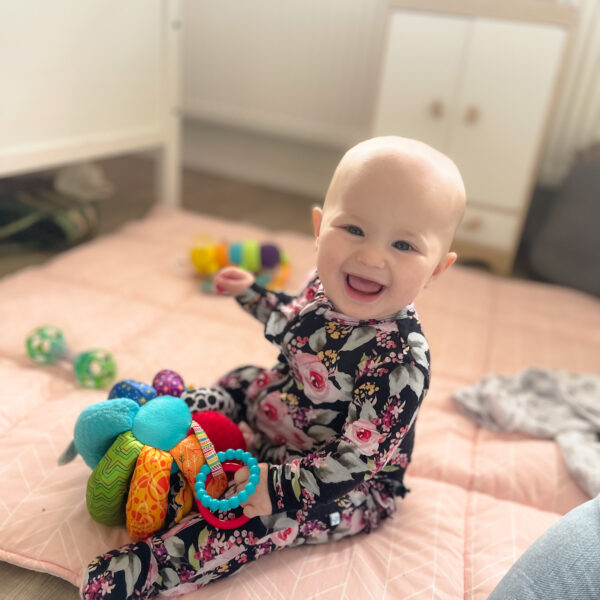Sharing is caring, right? But sometimes what we share is not only laughter and love but also germs and bugs that could pose serious threats. Understanding when someone’s routine “I’m fine” has crossed into “it may be time to visit a doctor” territory is essential. You will soon become adept at recognizing silent infections without having to become an instant medical expert overnight.

Early Warning Signs of Symptoms: What To Watch Out For
Temperature Tantrums
Fever is one of the telltale signs that an infection could be present in your household. Fever serves as our body’s natural defense mechanism against viruses and bacteria invading our systems, creating fever. Fever is an undeniable sign of immune system activation and should not be taken as cause for alarm. Fever that exceeds mild thresholds or lasts more than two days can be an indicator that an infection could be more serious or is not responding as expected to initial immune defense efforts. Additional caution must be exercised if temperature tantrums are accompanied by other symptoms, including lethargy, headaches, skin rashes or stiff necks. These could indicate more serious infections such as meningitis. Parents of young children and infants should pay particular attention to fevers that appear abnormal or are coupled with concerning symptoms, as their developing immune systems can lead to sudden spikes. Monitoring, understanding context and looking for medical advice as soon as the symptoms become disturbing are critical steps in providing appropriate and timely care for young patients.
The Sniffles vs. The Sneezes
Transitioning away from temperature issues, another set of symptoms presenting a contrast is sniffles versus sneezes. While mild infections may seem harmless and inconsequential, understanding their subtle distinctions can provide valuable information regarding their nature and cause. Sniffles, marked by runny or stuffy nose, often indicate an upper respiratory tract infection caused by viruses like the common cold. While annoying, this condition usually does not pose serious threats and can often be managed through rest and over-the-counter remedies. Sneezing, particularly when rapid and frequent, may indicate your body’s attempts to expel irritants from your nasal passage. When coupled with other symptoms like itchy eyes and throats, this behavior could indicate an allergic response rather than infectious disease. Sneezing and sniffling require close consideration within a global health environment that includes flu concerns. Their presence should prompt closer observation or isolation to limit infection spread, underscoring the importance of noting even minor symptoms in safeguarding one’s well being.
Deciphering the Message in Snot Colors
Although sneezes may be painful, their various hues of nasal discharge, commonly referred to as snot, can also act as indicators of our health status. Clear snot indicates that our bodies are functioning normally. This typically occurs with mild allergies or colds. Yellow snot indicates the body is actively fighting an infection as white blood cells gather and flush themselves out through nasal mucus. When green snot appears, however, this indicates a possible bacterial or viral infection requiring further investigation or even medical advice from healthcare providers. Red or brown-tinged snot indicates there may be bleeding due to dryness or irritation in the nasal passages, while black snot could indicate serious fungal infection, especially among individuals with compromised immune systems. Understanding snot color meanings helps individuals better assess the severity of their conditions and decide when medical help may be required.
When to Play Doctor (and When to Actually See One)
Couch Diagnosis
While “Couch Diagnosis,” or the practice of self-evaluating symptoms from home, can be appealing, given all of the health information readily available online, it also poses certain risks. Self-diagnosing health concerns is natural, yet misinterpreting symptoms, creating unnecessary anxiety, and delaying professional medical advice could potentially prove fatal. Establishing the difference between minor ailments that can be safely managed at home and serious conditions that require medical intervention is of critical importance. A common cold may not necessarily warrant medical evaluation every time. But persistent symptoms or unusual signs should be evaluated by healthcare professionals.
Pharmacy Follies
One of the main pitfalls in self-diagnosis is falling prey to pharmacy follies: an unhealthy reliance on over-the-counter (OTC) medications and supplements as a means of curing our ailments without looking for professional medical advice first. This nonspecific approach not only risks missing the real source of symptoms but also increases the chance for adverse interactions among multiple medications or supplements being taken simultaneously. Just because an OTC medication is available doesn’t mean it should be trusted as harmless or universally effective. Misusing these products could lead to complications or mask the symptoms of more serious conditions, so consulting with either your pharmacist or physician before beginning any new regimen, even if OTC, ensures treatment is appropriate and safe.
The Not-So-Silent Signals Your Teen Won’t Tell You About
Monosyllabic Mumbles as a Cry for Help
Monosyllabic responses or mumbles from teenagers, often dismissed as typical adolescent behavior, may sometimes be a telltale sign of more serious physical health concerns like infections. When normally communicative teens resort to monosyllabic communication instead, it could signal discomfort or pain that makes conversation draining. Such subtle shifts should prompt further inquiry or observation for other symptoms that might otherwise go undetected. When these minimal responses accompany fatigue, fever, or lethargy as indicators of an infection, this could signal nonverbally for help while prompting medical intervention quickly enough so medical attention can intervene on time before health complications worsen significantly or escalate quickly enough.
Preventative Measures: Keeping the Whole Squad Safe
Sanitation Nation
Sanitation nation plays an invaluable role in providing preventative healthcare, particularly among adolescents who are navigating complex social environments such as schools, sports teams, and community gatherings. Teaching young children the significance of maintaining good hygiene practices from an early age not only benefits them but also protects those around them. Simple habits such as regularly handwashing, using hand sanitizers, covering one’s mouth while coughing or sneezing, and staying home when feeling unwell can significantly limit the spread of infection. By cultivating a culture of cleanliness and responsibility towards collective health, we empower them to take an active role in protecting public health.
Improving Immunity Like a Boss
Establishing and strengthening one’s immune system during adolescence is of utmost importance, particularly as their bodies continue to change and adapt. Just as managers employ strategies to maximize performance and output, young kids too can employ strategies to strengthen their defenses against infection. Integrating a diet rich in fruits, vegetables, lean proteins and whole grains into one’s lifestyle is the cornerstone of strong immunity. Regular physical activity not only strengthens muscles but also increases circulation, both vital components for strong immune responses. Sleep is another cornerstone of health. It strengthens immunity while supporting the repair and growth of tissues. Furthermore, mindful practices, hobbies or spending time with loved ones are great ways to alleviate stress without adversely impacting immune health. Adopting such habits early can set an example for lifelong wellbeing in adolescents.
Conclusion
Recognizing when one of your family members may be suffering more than just Monday blues is part detective work, part intuition, and all love. Though we may have shared laughs at our close calls about diagnosing something so rare (thank you, Dr. Google!), what’s really important here is knowing when professional advice needs to be sought. No search engine can replace tailored medical guidance from healthcare professionals. Keep laughing but most of all keep your appointment card handy – families that stay healthy together make for happy lives together, even through sickness.







Leave a Reply